News
An Interview at WTM with the TAT Governor
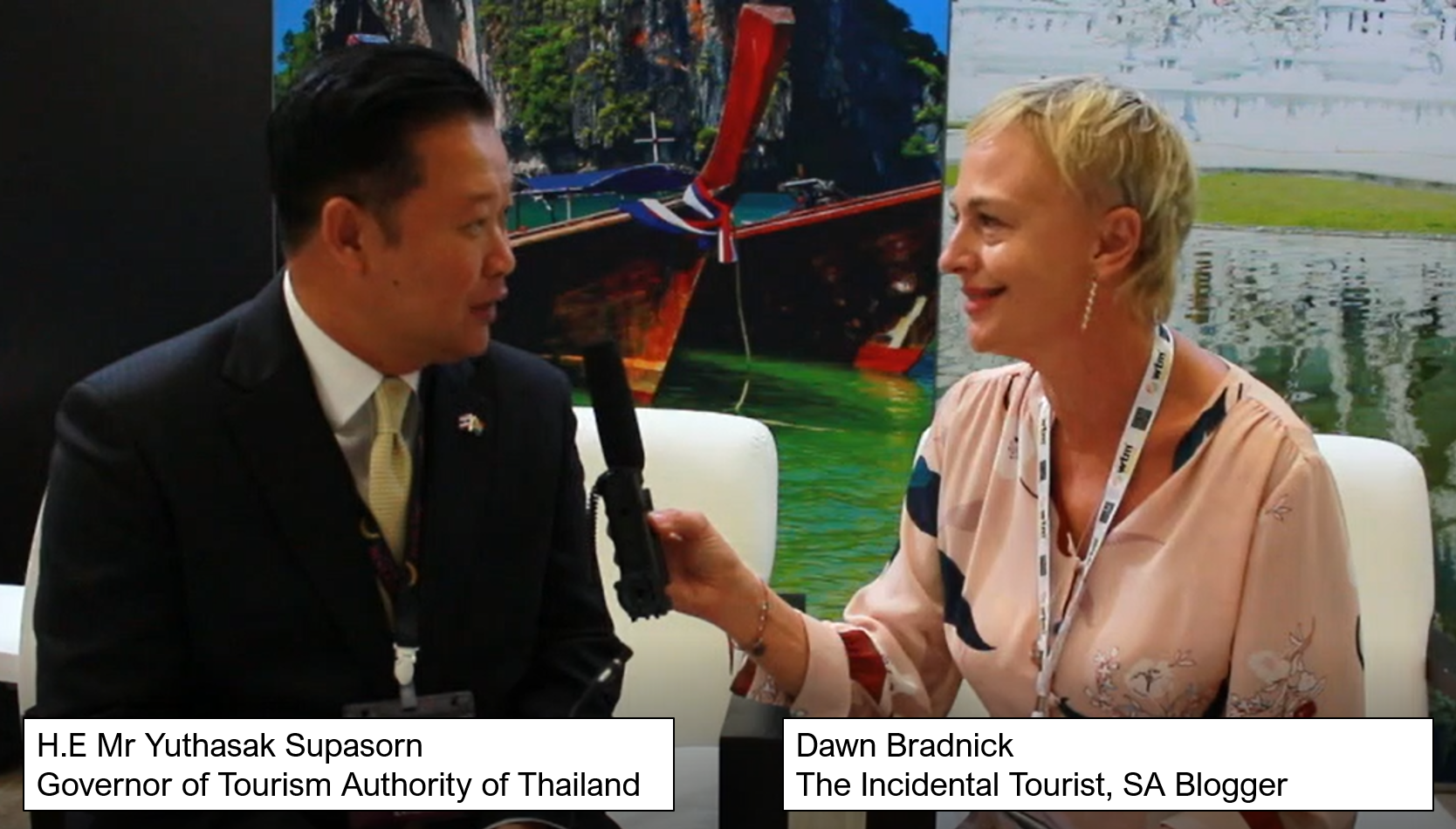
The Tourism Authority of Thailand exhibited at WTM Africa, the leading B2B exhibition in Africa, for the sixth year in 2019.
Since the onset of this exhibition, aimed at bringing the tourism industry (worldwide) together over a three-day period, Thailand was a part of networking, contracting, and striking new business relationships at WTM.
Thailand is becoming an increasingly popular holiday destination among South Africans! Thus, we were honoured to have the Tourism Authority of Thailand's own Governor, Mr Yuthasak Supasorn, join us on the stand. He was interviewed by The Incidental Tourist herself, Dawn Bradnick.
Click the image to watch the interview right here to gain some insight into the pride of Thailand!
5 Beaches worth visiting in Phuket
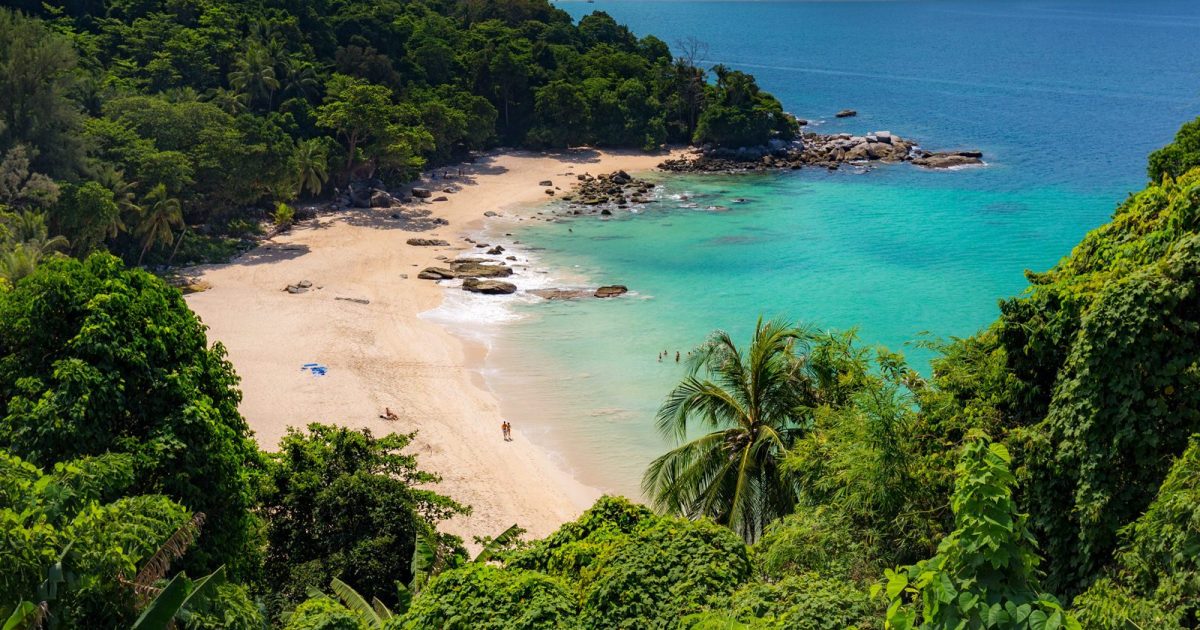
- Mai Khao Beach
 Situated north of Sirinat National Park headquarters on the northwest coast of Phuket, the island’s lengthiest stretch of beach at 11km is still wonderfully undeveloped, The sand of Mai Khao Beach, which translates as ‘white wood’ is probably the roughest of any on Phuket but given that it is mostly uninhabited this is where you could walk for hours without coming across another living being. It is important to note that a sharp drop off into the Andaman Sea makes swimming between May to November unsafe here. Known for its turtle preservation projects, there is a Turtle Releasing Festival here every Songkran or Thai New Year.
Situated north of Sirinat National Park headquarters on the northwest coast of Phuket, the island’s lengthiest stretch of beach at 11km is still wonderfully undeveloped, The sand of Mai Khao Beach, which translates as ‘white wood’ is probably the roughest of any on Phuket but given that it is mostly uninhabited this is where you could walk for hours without coming across another living being. It is important to note that a sharp drop off into the Andaman Sea makes swimming between May to November unsafe here. Known for its turtle preservation projects, there is a Turtle Releasing Festival here every Songkran or Thai New Year.- Nai Thon Beach
 Nai Thon Beach is a paradise for people looking for a relaxing beach vacation, away from the crowds and the hustle and bustle. This beautiful beach is located south of Nai Yang Beach and just north of the smaller Nai Thorn Beach on the north west coast of Phuket
Nai Thon Beach is a paradise for people looking for a relaxing beach vacation, away from the crowds and the hustle and bustle. This beautiful beach is located south of Nai Yang Beach and just north of the smaller Nai Thorn Beach on the north west coast of Phuket- Patong Beach
 No visit to Phuket would be whole without time in Patong, the island’s most well-known beach. With its wide variety of happenings and energetic nightlife it has an established reputation as the best place to party and there are hundreds of restaurants, bars and nightclubs to enjoy, especially along Banga Road. Just minutes away the golden Patong beach is ideal for catching some rays, jet skiing, kayaking and parasailing. At 3 or 4 kilometres long, it is often jam-packed in the middle part and you’d be ambitious to think you’ll find parking, even for a bike. But the northern part of the beach is often much less occupied. Lovers of leisure can spend the day relaxing on a sunbed or enjoying a cocktail or foot massage from one of the vendors who regularly stroll along the sands.
No visit to Phuket would be whole without time in Patong, the island’s most well-known beach. With its wide variety of happenings and energetic nightlife it has an established reputation as the best place to party and there are hundreds of restaurants, bars and nightclubs to enjoy, especially along Banga Road. Just minutes away the golden Patong beach is ideal for catching some rays, jet skiing, kayaking and parasailing. At 3 or 4 kilometres long, it is often jam-packed in the middle part and you’d be ambitious to think you’ll find parking, even for a bike. But the northern part of the beach is often much less occupied. Lovers of leisure can spend the day relaxing on a sunbed or enjoying a cocktail or foot massage from one of the vendors who regularly stroll along the sands.- Freedom Beach
- Laem Sing Beach
Interesting Facts about Phuket Province
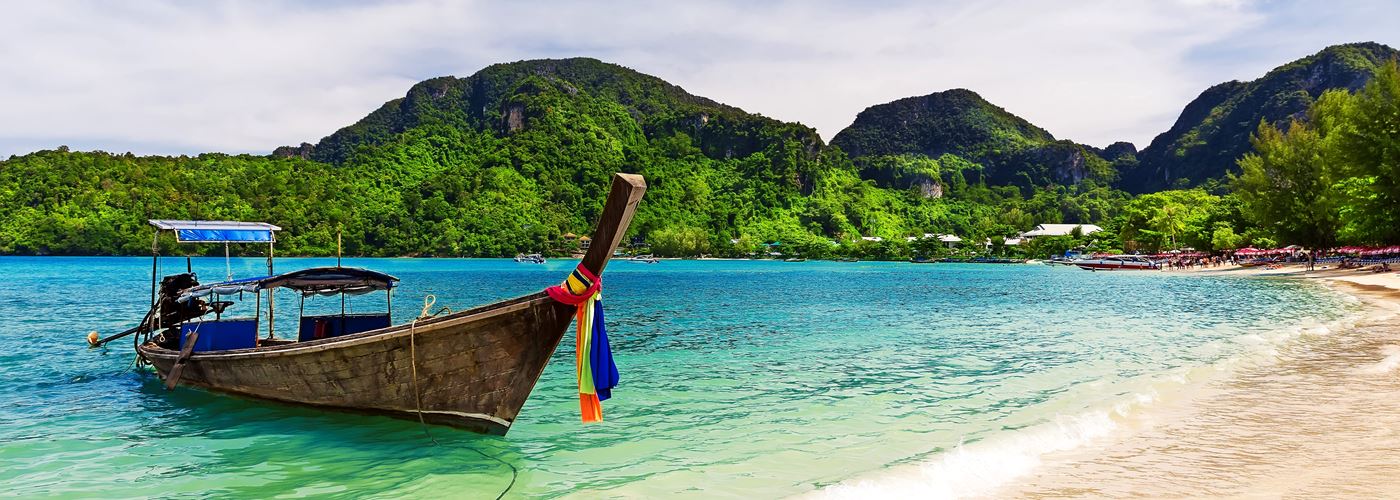
- Phuketis the largest island in Thailand being just under the size of Singapore. It stretches just over 222 sq. miles (576 sq. km). Phuket is known for its beaches, Patong, which is one of the biggest tourist attractions for the island, there are 36 beaches spanning the island in total.
- The island’s length from north to south is 48 kilometres and its width is 21 kilometres.
- The word Phuket actually means mountain jewel.
- Kathu Mining Museum is a museum established to commemorate the thriving tin mining industry that ruled the island for centuries.
- As can be attained from the origin of the name, seventy percent of Phuket’s area is covered with a mountain range that stretches from north to south. There are 9 streams but no real rivers.
- Specifics will be hard to find, but the latest census in 2012 put Phuket’s population at about 600 000 people, among them migrants, international expats, Thais registered in other provinces and locals, although that probably has increased by now.
- The Sirinat National Park on the northwest coast was established in 1981 to protect an area of 90 square kilometres of land and 68 kilometres of marine area, including the Nai Yang Beach where sea turtles lay their eggs, a forward-thinking decision that has preserved the area.
- Numerous celebrities from around the world frequently visit Phuket including Naomi Campbell, Kate Moss, Kevin Spacy and Leonardo DiCaprio.
Remarkable, unique temples among the 40,000 throughout Thailand
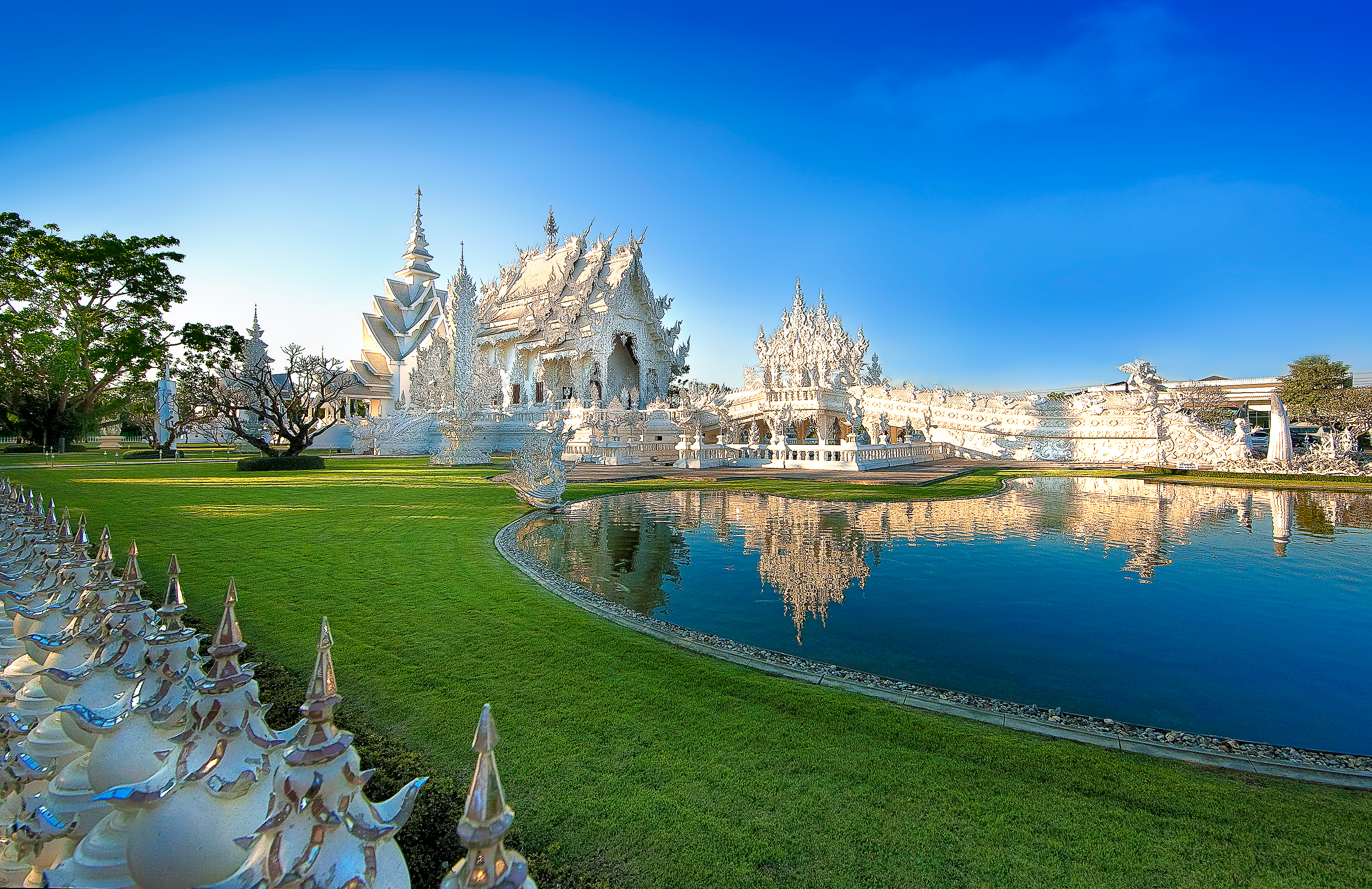
Did you know there are over 40,000 temples in Thailand, of which some 37,000 are in current use welcoming devotees and visitors? Bangkok alone has around 400 temples, according to the Office of National Buddhism.
While it is impossible to see them all on holiday, here are some of the most remarkable temples worth visiting for their exceptional architecture and style.
Bangkok
One of the most iconic temples of the capital city and indeed the whole country, Wat Arun or the Temple of Dawn sits majestically alongside the Chao Phraya River and is probably the best-known temple with its famous silhouette being a top photo spot for tourists.
Also not-to-be-missed is Wat Pho which is famed for its giant 46 metre long, 15 metre high reclining Buddha that is covered in gold leaf and as being what many consider the leading school of traditional massage in Thailand.
Wat Phra Kaeo, commonly referred to as the Temple of the Emerald Buddha, is located within the Grand Palace compound and is regarded as Thailand’s most important Buddhist temple. Enshrined within the temple is the Emerald Buddha, a highly revered Buddha image carved from a single block of jade.
Wat Benjamabophit is renowned for the use of Carrara marble imported from Italy in its construction and as being the temple depicted on the 5 Baht coin, while Wat Saket or the Golden Mount temple sits atop a hill in the old city area and as such offers spectacular 360 degree views of Bangkok, which are especially captivating at sunset when the city turns gold and orange.
Northern Thailand
In the North, a most amazing temple is certainly Wat Rong Khun in Chiang Rai. The temple is an ancient structure, which was taken over at the end of the 1990s by local Thai artist Chalermchai Kositpipat.
Chalermchai spent over one billion Baht to transform the temple of which the entire exterior is a striking white and silver. Murals and sculptures blending traditional Lanna and Thai motifs and contemporary figures refer to meditation, the fight between good and evil, and the teaching of Lord Buddha. Spiderman, Neo from the Matrix and Michael Jackson stand side by side with demons of the Ramayana or representations of Lord Buddha. It is an amazing piece of architecture, which fluctuates constantly between the sublime and the kitsch.
Wat Phumin in Nan is renowned for the beautiful 19th century mural paintings that adorn much of its interior walls. These depict Lord Buddha’s life and also the daily life of the local people, farmers, noblemen and foreign traders – Chinese, Persians and Westerners – of the time. Perhaps the most famous depiction is that of a tattooed man whispering to a woman who wears a slight yet intriguing smile on her face.
Wat Phumin itself is a 500-year old temple built in typical Lanna and Thai Lue (a local ethnicity) architecture and features four entrances, one on each side and which are topped with a multi-tiered, decorated structure.
North Eastern Thailand or Isan
Among the temples to visit in Nakhon Ratchasima – part of Isan’s four largest cities ‘club’ that also comprises Udon Thani, Khon Kaen and Ubon Ratchathani – is Wat Sala Loi, one of the rare examples of tropical modern architecture in Thailand. The temple was originally constructed in 1827 but was then totally rebuilt in 1967 adapting a modern layout inspired by traditional junks (boats).
Inside Wat Sala Loi, the main hall features a design that aims to reflect the feel of a ship riding the waves, while windows reinterpret traditional architecture with a modern twist. The back of the temple is covered with modern ceramics while a giant white Buddha statue attracts the eye amid a rather sober interior of grey/black marmor.
The exceptional design of Wat Sala Loi earned the structure an award in 1973 for the best avant-garde religious building from the Association of Siamese Architects under Royal Patronage. The temple’s lush gardens contain the surprise of lifestyle statues of heroes from US comics like Spiderman and Captain America.
Central Thailand
A Gothic altar, stained glass windows and even medieval armouries… what looks like a church is actually a quite extraordinary temple next to Bang Pa-In Palace in Ayutthaya. Wat Niwet Thammaprawat Ratchaworawihan was built by Austrian-Italian architect Joachim Grassi some 140 years ago, at the request of King Rama V the Great who was fascinated by European architecture and asked him to create a Royal Temple for Bang Pa-In Palace, which would emulate the architectural details of a gothic church.
Surely Thailand’s most European temple, the walls bear paintings and gothic sculptures, while a Lord Buddha Image stands in the middle of what would have been a cross in a real church. Stained glass used in the construction was manufactured in France, and in one section shows a depiction of the King.
Southern Thailand
Wat Phra Mahathat Wihan is a Ceylonese-style temple on the eastern coast of South Thailand, in the city of Nakhon Si Thammarat – one of Thailand’s oldest settlements and once part of the Sumatra-based Srivijaya Kingdom.
For those who are particularly interested in the Srivijaya culture, the best example of Srivijaya architecture is to be found at Wat Phra Borommathat in Chaiya, Surat Thani, which boasts a splendid chedi.
These are but a few of the outstanding temples that abound throughout all regions of Thailand, each of which in its own unique and collective way presents a captivating glimpse into the fascinating historical, architectural and religious characteristics of the kingdom. Explore as many as you can!
The City of Phuket – an exciting mix of old and new
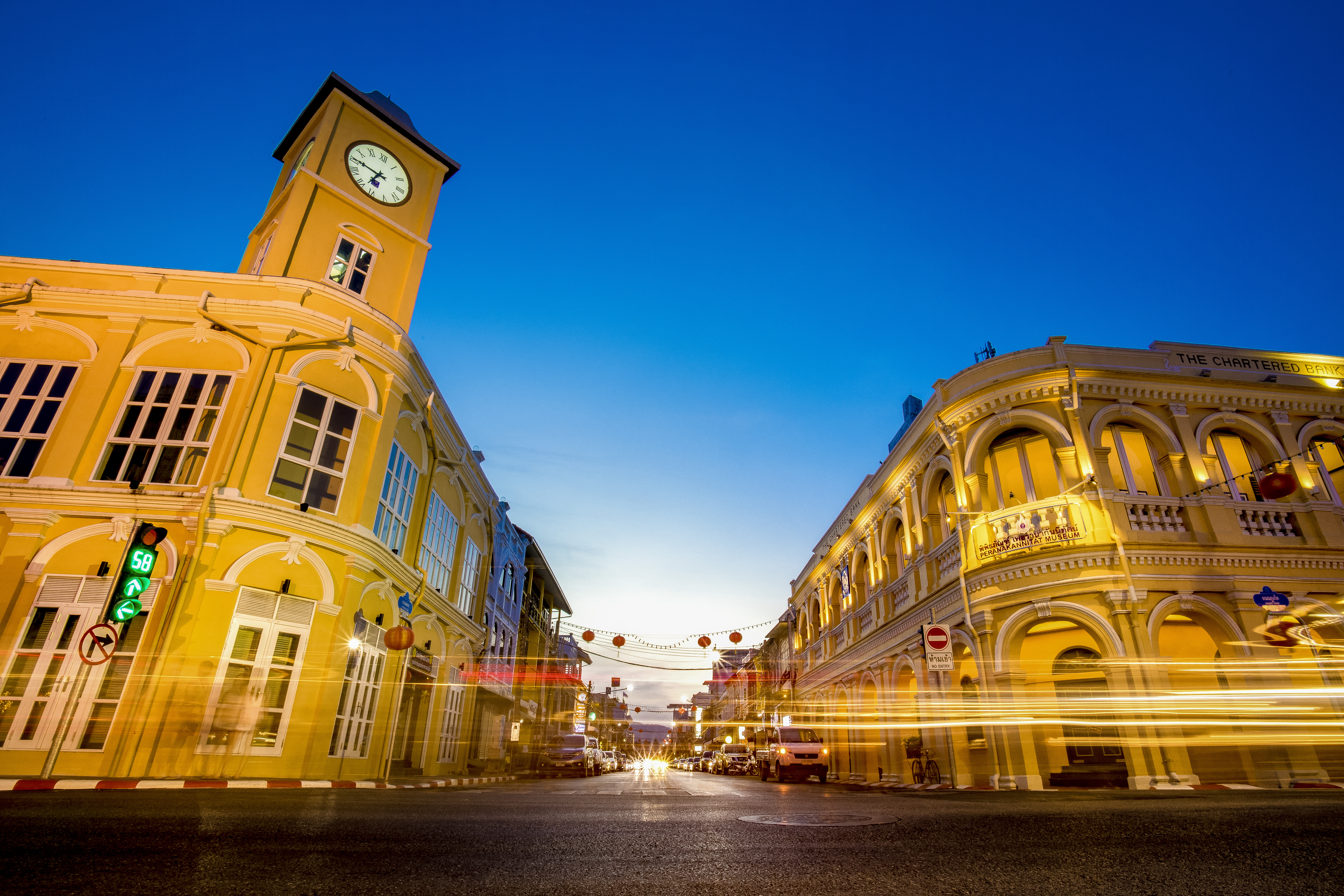
Thai tourism organisations step up war on plastic
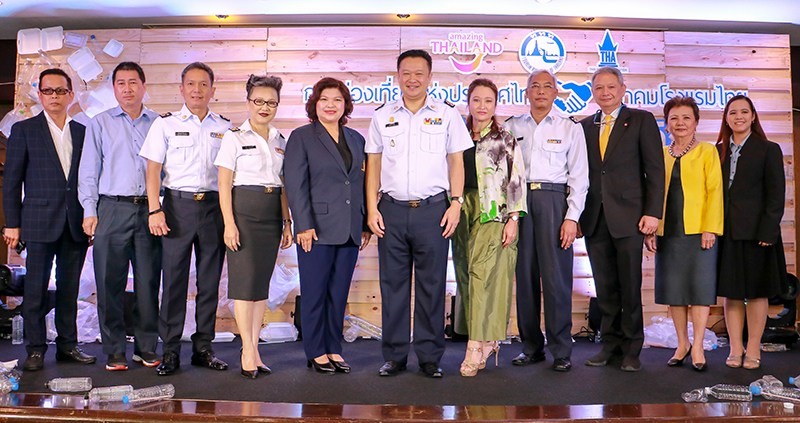
Various campaigns will encourage hotels, both THA members and independent Thai hotels, to reduce single use plastic plus motivate tour companies, travel agencies and online travel agencies to support participating hotels that are part of this project.
TAT Governor Mr. Yuthasak Supasorn said: “We look forward to working closely with the THA on this important project. Thai hotels can play an important role both in raising awareness among their guests and reducing plastic waste in daily hotel operations.”
The joint effort will invoke 12 preliminary guidelines for participating hotels to follow:
- Reduce plastic packaging used for bathroom amenities.
- Reduce the use of plastic bags in hotel rooms (laundry or trash bin).
- Use local products made with biodegradable packaging materials.
- Reduce plastic water bottles; use reusable containers instead, especially for meetings and seminars.
- No plastic straws.
- Self-service corner for coffee/tea breaks during meetings and seminars.
- Reduce single use plastic food or drink containers.
- Separate trash bins on beach areas adjacent to hotels.
- Create a sustainable ‘no plastic’ rate card for meetings and weddings customers.
- Separate waste at the hotel.
- Organise all departments within the hotel to reduce plastic.
- Encourage guests, customers, clients and partners to join the ‘anti-plastic revolution’.
TAT will support all participating hotels at their participation in trade shows; such as, the ITB, TTM, WTM, etc. Green friendly operators will also meet core criteria TAT uses to invite and support sellers to join trade shows and road shows.
This joint effort between TAT and THA marks the first step under TAT’s collaboration initiative with various stakeholders in July last year.
Other public and private sector partners joining in TAT’s reducing tourism-related waste initiative include the THA, the Expedia Group, Tourism Council of Thailand, Siam Piwat Retail and Development Company, Chao Phraya River tourism-related businesses including ICONSIAM, Nonthaburi Municipality, plus other local communities in Bangkok.
All pledge to raise environmental awareness while encouraging other tourism-related businesses to support their initiative.









